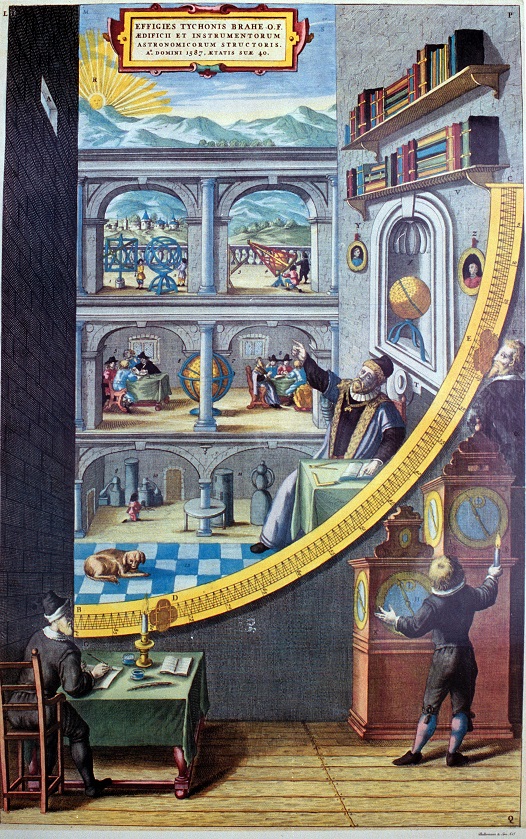Tycho Brahe's Mural Quadrant
Domingos Soares
July 20, 2019

|
Tycho Brahe (1546-1601), Danish astronomer, was the greatest genius of the observational
astronomy prior to the era of telescopes. All of his astronomical observations were realized with the naked eye,
and the aid of instruments of large sizes, that he himself designed and managed to have them built.
In this image, one sees the great “Mural Quadrant” or
“Thyconian Quadrant”. It is a quadrant made of brass, with a radius of almost 2 meters,
fixed on a wall, wherefrom its name came, i.e., “Mural”. The painting of the
“Mural Quadrant”, which appears in the image, is by the Dutch cartographer and painter
Jan Blaeu (1596-1673), from Amsterdam, who reproduced in color an illustration, in black and white, of Tycho Brahe's book
“Astronomiae Instauratae Mechanica” (1598), where the astronomer's instruments are
presented.
Bibliography
J. Ashbrook, Tycho Brahe’s Nose, Sky and Telescope, vol. 29(6), p. 353, 1965
J. Christianson, The Celestial Palace of Tycho Brahe, Scientific American, vol. 204(2), p. 118, 1961
Victor Thoren, The Lord of Uraniborg: a Biography of Tycho Brahe, Cambridge University Press, 2002
Updated: 22jul19
Read other articles in
www.fisica.ufmg.br/~dsoares/notices-e.htm.

